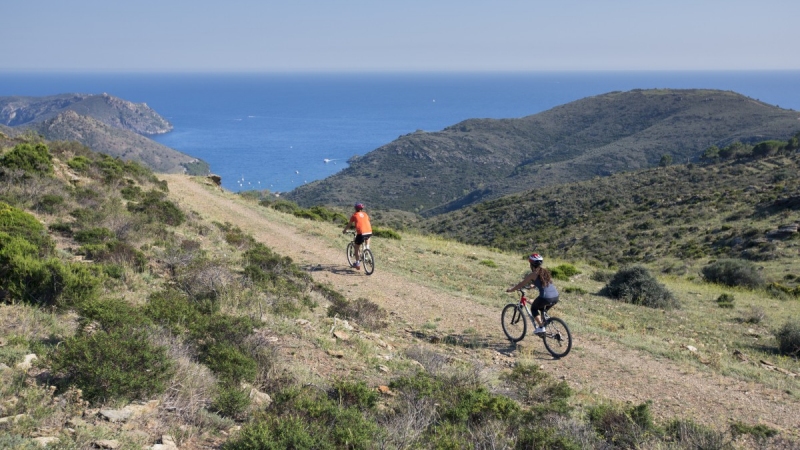PRODUCTS FROM EMPORDÀ
-
RICE OF PALS

The rice produced under the “Product of the Empordà” brand is marketed as “Rice from Pals” and is mainly grown in the Baix Empordà (532h) but also in Castelló d’Empúries (72h). It seems that rice farming was introduced by the Arabs, making the most of the easily irrigated land. In the 18th century, landowners limited it to prevent disease and it died out. From the beginning of the 20th century farming started again, reaching maximum production in the 1950s.
-
APPLES FROM GIRONA

The Empordà plain and the land specifically around Sant Pere Pescador are mainly used to grow fruit trees. The large areas of apple trees are outstanding, and these produce the magnificent apples known as apples from Sant Pere. They are certified as a product with a Protected Geographic Indication “Apple from Girona” and are easily found in markets and shops in the region. The Golden, Red Delicious, Gala and Granny Smith varieties are grown. They are famous for being particularly flavoursome and are eaten raw, but can also be cooked for main dishes and desserts.
-
FRITTERS FROM EMPORDÀ

Fritters are round sweet pastries of Arab origin made from dough of flour and water, fried and covered in sugar. Aniseed gives them their typical flavour. They are certified as a “Product of the Empordà”. They are the traditional dessert at festivals, particularly during Carnival and Easter and many homes make them on these dates. They can be found at bakeries and cake shops around Roses.
-
ONIONS FROM FIGUERES

The climatic and geographic conditions of the Empordà enable onions to be grown in Figueres. They are certified as a “Product from the Empordà”. They are known throughout the country and are known for their sweeter and milder taste, their flatter shape and typical lilac colour. They are normally used as the basis of many dishes as well as raw in salads.
-
SWEET CATALAN SAUSAGE

Certified as a “Product of the Empordà”
Many, many years ago, when a pig was killed, many houses sweetened the Catalan sausages with sugar. Records of this dish date back to the 14th century. The most unusual aspect is that they can be eaten as an aperitif, main course or dessert. They are traditionally eaten at Easter.
-
EMPORDÀ HONEY

Honey has been collected in this area since ancient times. It is a natural product made by bees using the nectar from flowers and the exudations of some trees. There are different kinds depending on the flower used and its colour can vary from almost transparent to dark brown. The producers in the area market pure honey that often crystallises over time, a fact that guarantees its properties, unlike pasteurised honeys that have lost the majority of their vitamins.
-
ANCHOVIES FROMA ROSES

One of the products derived from fishing are salted anchovies, a traditional and ancient method of conserving fish. The remains of an old Roman salting factory can be visited at the Citadel in Roses.
This tasty `product can now be found in various shops around the village as well as in the fishmongers’ in the fishing port.Roses anchovies have been awarded the Girona Excellent food quality seal in 2014, for their quality and their completely artisanal
preparation.
-
OLIVE OIL FROM EMPORDÀ

One of the most significant crops is olives dating back to the arrival of the Greeks and covers large areas of land, many farmed by families.
CERTIFIED ORIGIN
The Protected Denomination of Origin Oil of the Empordà, created in 2008, ensures the quality of the olive oil produced in the two Empordà regions and in some municipalities of the Pla de l'Estany and Gironès. It is a certificate promoted by the Department of Agriculture, Food and Rural Action of the Generalitat of Catalonia and guaranteed by the effort of farmers and cooperatives.
TWO THOUSAND YEARS OF HISTORY
Traces of the first olive trees have been found in the Empordà dating back to the end of the Bronze Age. But olive farming and oil production is attributed to the Greeks who arrived by sea in 6BC and founded the colonies of Empúries and Roses, which quickly became dynamic commercial enclaves. Later the Romans maintained the crops and the Benedictine monks consolidated them, until they reached the current situation, with an area of more than two thousand hectares of olive trees and the production of high quality oil.
NEXT TO THE UPLANDS AND ON THE COAST
The farming area is mainly on poor quality land: the Albera and Rodes mountain ranges, to the north; Montgrí and Les Gavarres, to the south. Mountainous substrates form a typical geology, with granites, chalk and clay. The privileged geographical location of the Empordà, between the Mediterranean Sea and the Pyrenees, means the climate is a mixture of mild winters, not-too-hot summers and the inevitable tramuntana wind. The combination helps form the unique nature of oil from the Empordà.
UNIQUE VARIETIES
The quality and unique nature of oil with the Protected Denomination of Origin Oil of the Empordà are guaranteed by the specific varieties of the area: Argudell, Corivell and Verdal (Llei de Cadaqués); and at the end of the 20th century the variety Arbequina was introduced. Oil from the Empordà is clear, clean and transparent. It is significantly complex, with aromas of fennel, almonds and aniseed. The taste and sensations change depending on the fruit used to produce it. The Argudell and Corivell varieties have a delicate sweet and bitter balance, whilst the Llei de Cadaqués variety gives rise to a fruity, ripe oil with a little spiciness.
-
THE
“Cremat” is a drink made from black rum, perfumed with cinnamon, lemon peel and coffee beans. It is prepared in a large earthenware casserole dish where all the ingredients are heated together until the rum ignites and it is left to burn before being served. Although a lot of the alcohol is burnt off during the process, it is a strong drink drunk in winter to keep warm and is traditionally served at Habanera concerts. These customs come from the time when many inhabitants of the area emigrated to Cuba, then Spanish territory, and returned bewitched by the tropical country.
-
HOMEMADE COTTAGE FRESH CHEESE

The region also has various dairy products such as cheese, yoghurts, cottage cheese made from cow’s, sheep’s or goat’s milk and, recently, even from buffalo’s milk. One of the outstanding products in the area is homemade cottage cheese, made from sheep’s milk in the past, and now from pasteurised cow’s or goat’s milk. It is a milky white product, with a soft, gelatinous texture and a very mild flavour.
-
ROSES' FISH

Fishing has always been one of the main activities in Roses, as a product for survival but, above all, as an important trading product. It is a highly specialised industry and the fishing boats are equipped with different fishing gear depending on the type of fishing style. The port of Roses is number one in the number of captures in the Girona area and second for Catalonia as a whole. The ecological richness of this area of the Mediterranean results in a great variety of fish and seafood species. Highlights include:
Hake, monkfish, gilthead breams, sea bass, red mullets, sole, sea bream, anchovies, sardines, prawns, langoustine, squid and cuttlefish, clams, etc.
You are invited to get to know this craft through guided tours organised by the Tourist Office of Roses, as well as to visit fishmongers and restaurants in Roses, where we are sure you will be tempted to taste the delicious products our fishermen provide.
The essence of these products is in the famous “Fish Stew of Roses” offered by many restaurants in Roses or, if you prefer, you can try making it yourself.










